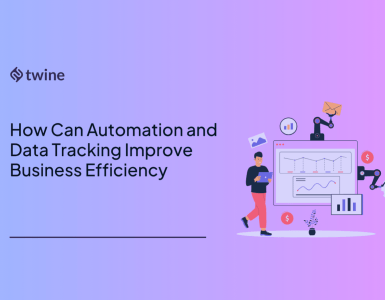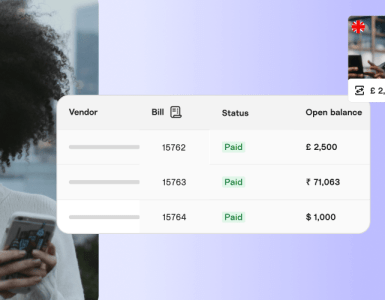Crowdfunding platforms can be pretty confusing, right? There are lots of them, and they all offer different things. Because of this, it can be difficult to know which crowdfunding platform is right for your startup.
But the right information can make a world of difference.
In this article, we’ll talk you through 5 different crowdfunding platforms and what you can expect from them: Kickstarter, Indiegogo, Crowdcube, Crowdfunder, and Crowd Supply.
We’ll cover their pros and cons and how well each crowdfunding platform caters to startups.
Kickstarter

Kickstarter’s the biggest name in crowdfunding and the crowdfunding platform behind massive successes like Pebble.
The fact it’s so well-known is definitely in its favor – journalists are more likely to peruse Kickstarter for stories (which means free PR for you) and on top of that, it just gets more traffic. Since its inception back in 2009, there have been 124,813 successful projects on Kickstarter.
Despite this, it’s not always the best option for a startup. For one, Kickstarter funds specific, creative projects. That means there’s got to be an end product or experience in mind:
Everything on Kickstarter must be a project. A project has a clear goal, like making an album, a book, a gadget, or a work of art. A project will eventually be completed, and something will be produced by it.
This means it’s not often suitable for web startups. However, if your startup is working towards a specific project – for example, if you’re a tech startup that designs 3D printers – you can use Kickstarter.
There are other things to bear in mind too. Kickstarter uses an all-or-nothing system of crowdfunding. This means that if you don’t raise your full target, you won’t get anything.
That said, this isn’t necessarily a bad thing. If the funds were still released when the target wasn’t met, it’s unlikely you’d have enough money to fulfill your promises to your backers anyway. Plus, if you don’t raise enough money, you won’t be charged anything by the platform.
But what about if you do raise enough? What sort of fees are you looking at for using the platform? Kickstarter takes 5% commission from the total raised, as well as payment processing fees. These processing fees vary depending on where you live but generally are about 3-5%.
Speaking of location, you will have to check you’re eligible to post a project on Kickstarter. You’re eligible to put up a project on Kickstarter if you live in any of these countries: US, UK, Canada, Australia, New Zealand, the Netherlands, Denmark, Ireland, Norway, Sweden, Germany, France, Spain, Italy, Austria, Belgium, Switzerland, Luxembourg, Hong Kong, Singapore, and Mexico.
> Read our guide on setting up a Kickstarter campaign.
Indiegogo

Indiegogo markets itself as a more democratized crowdfunding platform, and this means it’s a bit more flexible than Kickstarter. You can fundraise for pretty much anything, whether it’s an entrepreneurial project or a personal cause. You can also set a longer deadline than Kickstarter allows. Plus, it’s available in all countries where PayPal can be used.
Indiegogo also offers different funding options. You can choose fixed funding or flexible funding. Fixed is like Kickstarter’s system – you only get the money if you raise the full amount. Flexible funding lets you have any money you raise – but as we said earlier, this isn’t always a good idea if you’ve calculated a specific amount for specific reasons. Flexible funding is better suited for charitable and personal fundraising, where any amount will help.
Projects are also automatically sorted on Indiegogo, while on Kickstarter there’s an element of manual curation from the staff. This, again, is part of their effort to make the crowdfunding system more democratic. They call the algorithm that does this the Gogofactor:
The gogofactor is an algorithm that helps campaigns achieve greater visibility on Indiegogo.com—and reach audiences who may find them interesting.
The gogofactor is influenced by several aspects, including the scope of a campaign’s social engagement (such as Facebook likes and shares), and global reach.
Depending on the payment method, Indiegogo’s fees vary between a total of 8-10% (including processing.) These are similar to Kickstarter’s and are pretty standard across the board.
Compared to Kickstarter, Indiegogo has a much smaller audience and much less press coverage. Although Indiegogo’s been around longer, there have been fewer successful projects and they only have about one-sixth of the userbase of Kickstarter.
This means journalists are less likely to notice an Indiegogo campaign, meaning it can be harder to create a buzz that way. That doesn’t mean you should disregard them though.
Their flexibility is a big boon in their favor, especially given that you have more options in what you can fundraise for. This is good for startups, as it means you can use the money to cover some more general set-up costs. You can also set up a campaign without having to wait for Indiegogo to review it.
Crowdcube

Crowdcube is a UK-based equity crowdfunding platform. This means it works differently from Kickstarter and Indiegogo, which work on a rewards system. A rewards system is where backers receive something specific in exchange for backing the product. Equity crowdfunding means the backer is directly investing in the company in exchange for shares:
Crowdcube is the world’s first and leading investment crowdfunding platform, where a community of likeminded people pool their money and knowledge together to back startup, early and growth stage businesses. Crowdcube gives everyone the opportunity to become ‘armchair Dragons’, building upon their own investment portfolio and supporting British businesses.
This is closer to traditional funding methods, such as angel investing and venture capitalism. However, you’re opening it up to the general public – backers on Crowdcube can invest as little as £10.
This does mean you’re losing one of the main benefits of crowdfunding – the fact that you don’t have to surrender equity. On the other hand, it also means you’ve got more flexibility in how you use the investment and don’t have to worry about rewards.
Creating and distributing rewards can be both costly and time-consuming. Plus, if you don’t want hundreds of investors on your share register, they offer a ‘nominee’ system:
With a nominee, Crowdcube holds and is the legal owner of the investment on behalf of your investors so you have only one legal shareholder on your share register.
Alternatively, their direct system means everyone who backs you will be a legal shareholder. This has the advantage of building a closer relationship with your backers.
They’re very well established, owning about 50% of the UK market. Unlike rewards-based systems, their specific focus is on funding startups, which means they’re very fit for purpose. For instance, they’ve got stringent due diligence processes built into their platform. As part of this, they offer a lot of guidance on using their platform. And they have FSA approval, so are a safe bet.
It’s worth noting that, like Kickstarter, they offer an all-or-nothing model. Money is only taking from investors when the goal is reached. Their success rate is pretty stellar though, with 60% of campaigns successful. In terms of fees, they charge a 7% commission on the funds raised, plus Stripe payment processing fees.
> If you’re in the USA, Crowdfunder.com offers a similar service. It’s worth noting the USA has stricter rules about accredited investors, so it’s not quite the same as crowdfunding from the general public.
Crowdfunder.co.uk

This is another UK-based crowdfunding platform. In many ways, it’s not too different from Kickstarter or Indiegogo. You set up a project asking for backers, in return for rewards. With Crowdfunder, you also have the option to just ask for donations without a reward. They say their funding model is great for startups:
“You could be a community group, a start-up, a great cause, a charity or an organisation in need of some funding.”
A big perk of Crowdfunder is the fact they have additional funding available. As well as the money you raise from ‘The Crowd’, you could also be eligible for extra pledges of up to £10,000 from ‘The Funders’. These Funders tend to be government bodies and banks who are offering grants to support startups. It’s definitely not something to be sniffed at!
Like Indiegogo, you have a choice between ‘all or nothing‘ or ‘keep what you raise‘. The same warning applies – make sure that if you choose to keep what you raise, you’ll still be able to give your backers what you’ve promised them. They have the same fees for both systems – 5% + VAT + payment processing fees.
Crowd Supply

Crowd Supply is another crowdfunding platform, but they’re pretty strict about who they allow to use them. They support original, useful and respectful hardware.
So basically, they cater more to the new gadget side of crowdfunding. But if you fit into these criteria, they’re a fantastic option with some seriously impressive success rates.
So far, 58% of projects have been successful. Even more impressively, 100% of fully funded projects have been delivered to backers. This is because they take a hands-on approach and help with the fulfillment process, including shipping products out of their own warehouse. This commitment to helping with shipping can really simplify the later stages of a crowdfunding campaign. If you want to make it even more comfortable for your potential customers, use tools like My Package Tracking to provide more information about their orders.
They offer a number of plans, with varying levels of guidance. Their fees vary depending on which you choose:

So now you’ve picked your platform, it’s time to get your campaign going. Read our ultimate checklist on everything you’ll need to crowdfund your startup.
Ready to hire? Our marketplace of over 410,000 freelancers has the skills and expertise needed to skyrocket your business to the next level. From marketers to designers, copywriters to SEO experts – browse the talented bunch here!



